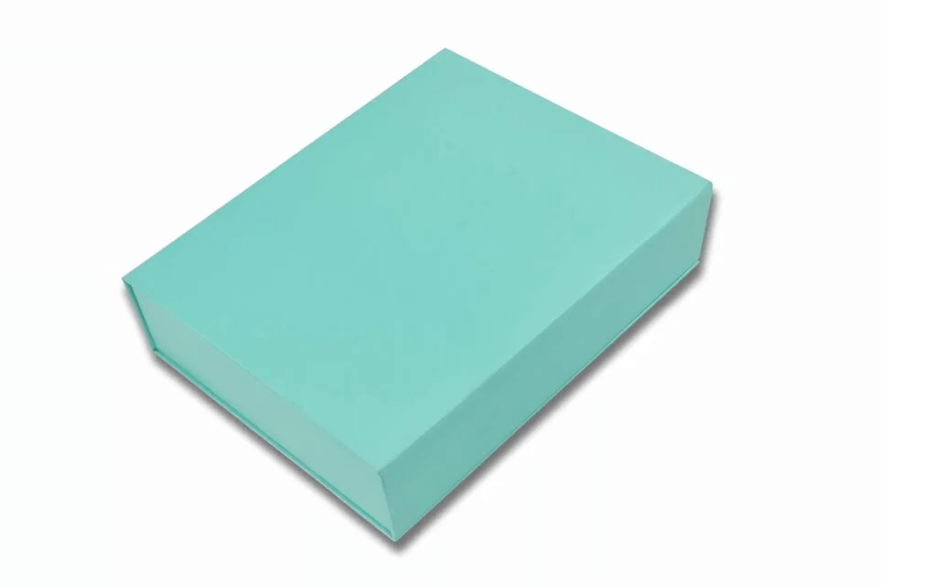
Understanding the core features while customizing boxes
Custom boxes serve as a canvas for brands, shaping consumer perceptions and reinforcing brand identity. Understanding their multifaceted role beyond practicality sets the groundwork for impactful packaging strategies. It involves aligning packaging designs with brand ethos and consumer preferences to create a seamless and memorable brand experience.
The Power of visual appealing and custom design packaging
Visual appeal is a commanding force in attracting consumer attention. Dynamic designs, complemented by vivid colors and striking graphics, significantly enhance the allure of custom packaging boxes. Engaging visuals not only distinguish products on shelves but also forge an emotional connection with consumers, prompting increased engagement and recall.
Uniqueness that help bands in standing out in a crowded market
In a competitive marketplace, differentiation is key. Custom boxes that exude distinctiveness and originality in design, structure, or functionality leave an indelible impression. Innovatively crafted packaging solutions create a memorable experience, fostering brand recognition and fostering long-term loyalty. Incorporating unique elements sets brands apart, capturing attention and establishing a unique identity in consumers’ minds.
Reliability in packaging solutions through valid information
Building trust hinges on reliability. Guaranteeing the quality and durability of custom boxes instills confidence in consumers. Sturdy packaging not only safeguards products during transit but also communicates a commitment to delivering items securely. Emphasizing premium packaging materials and robust construction reassures consumers of the brand’s dedication to excellence.
Packaging design that create mesmerizing image of product at social platforms
In today’s digital landscape, social media is a potent marketing tool. Strategic utilization of platforms to showcase aesthetically appealing custom packaging boxes can spark viral trends. Compelling content, visually appealing packaging displays, and interactive campaigns amplify brand visibility and reach. Encouraging user-generated content and inviting customers to share their unboxing experiences create buzz and expand brand exposure.
Interactive elements are getting popular:
Interactive elements in packaging introduce a dynamic dimension to the consumer experience, transcending the traditional notion of product encasement. These components transform packaging into a medium for engagement, delight, and education. Leveraging technology and innovative design, interactive elements captivate attention, fostering a deeper connection between brands and consumers.
One prevalent interactive feature is the integration of QR codes or augmented reality (AR) experiences on packaging. QR codes act as gateways, directing users to exclusive content, product tutorials, or special offers upon scanning, expanding the narrative beyond the physical confines of the box. AR, on the other hand, immerses users in virtual experiences, allowing them to visualize products in their environment or access interactive storytelling elements through mobile devices.
Moreover, puzzles, riddles, or hidden messages cleverly embedded within the packaging evoke curiosity and engagement, turning the unboxing process into an interactive adventure. These elements not only entertain but also encourage social sharing, as consumers eagerly showcase their discoveries on social media platforms.
The allure of interactive packaging lies in its ability to foster memorable and shareable experiences, enhancing brand visibility and leaving a lasting impression on consumers. As technology continues to evolve, the potential for innovative interactive packaging elements to captivate and engage consumers will only expand, reshaping the dynamics of consumer-brand interactions.
Customization that add visual appeal to the products:
Visual appeal in packaging design serves as a gateway to capturing attention, conveying brand messages, and influencing consumer perceptions. It encompasses a spectrum of elements, from colors and typography to imagery and layout, all meticulously crafted to create a compelling visual narrative.
Color psychology plays a pivotal role, as different hues evoke varied emotions and associations. Vibrant colors might exude energy and excitement, while muted tones convey sophistication or calmness. The strategic use of color combinations within a brand’s palette ensures coherence and reinforces brand recognition.
Typography serves as both a visual and communicative tool, conveying brand personality and messaging. Fonts are chosen to align with the brand’s identity—be it bold and modern or elegant and timeless—ensuring readability and aesthetic harmony.
Imagery, whether through product visuals or artistic illustrations, resonates with consumers, providing a glimpse into the product’s essence. Compelling visuals not only grab attention but also communicate the product’s features, benefits, or usage scenarios.
Layout and design structure dictate the visual flow of the packaging, guiding the consumer’s eye and emphasizing key elements. A well-balanced layout ensures clarity and impact, directing attention to the most critical information while maintaining an aesthetically pleasing composition.
Ultimately, visual appeal in packaging design is a powerful tool for brands to entice, engage, and leave a lasting impression on consumers, significantly influencing purchasing decisions and brand perception.
Personalization options to make packaging customer relevant:
Personalization in packaging introduces a bespoke touch that resonates deeply with consumers, creating a sense of exclusivity and forging stronger connections between brands and their audience. By offering customized packaging options, brands can tailor the unboxing experience to align with individual preferences, thus enhancing customer satisfaction and brand loyalty.
Customization spans various aspects of custom rigid boxes, from incorporating a customer’s name or personalized message to allowing them to choose specific designs, colors, or even packaging sizes. This level of personalization elevates the packaging from a mere container to a unique and meaningful extension of the brand’s relationship with the consumer.
Moreover, personalization fosters a sense of ownership and connection, making customers feel valued and understood by the brand. It cultivates a memorable experience, prompting consumers to share their personalized unboxing moments on social media, thus amplifying brand visibility through user-generated content.
Through data analytics and insights, brands can leverage personalization effectively, understanding consumer preferences and behavior to offer tailored packaging solutions. Whether through limited-edition packaging, seasonal variations, or personalized notes, the ability to customize packaging enhances brand perception, drives engagement, and ultimately influences purchasing decisions in a competitive market landscape.
Functional packaging features that make boxes more beneficial:
Functional design in packaging goes beyond aesthetics, focusing on practicality and user experience to enhance convenience and utility for consumers. It involves thoughtful consideration of how the packaging protects the product, facilitates ease of use, and adds value to the overall consumer journey.
Firstly, functional packaging ensures the safety and preservation of the product. It employs materials and structural elements that shield the contents from damage during transportation and storage while maintaining product integrity.
Additionally, user convenience is prioritized through features like easy opening and resealing mechanisms, ergonomic designs, and clear instructions for usage or assembly. Packaging that simplifies access to the product, offers reusability, or provides storage solutions after the initial use enhances its functionality and adds practical value.
Moreover, multi-purpose packaging designs that serve secondary functions beyond containment contribute to sustainability and consumer satisfaction. Examples include packaging that doubles as a storage box, transforms into a display stand, or integrates reusable components.
By incorporating functional design elements, packaging becomes more than just a vessel for the product; it becomes an integral part of the consumer experience. Brands that prioritize functional design create packaging that not only protects the product but also adds convenience, value, and versatility, thereby fostering positive brand associations and consumer loyalty.
The crux of the discussion
Packaging design stands as a critical bridge between brands and consumers, weaving together creativity, functionality, and personalization to craft unforgettable experiences. From visually captivating aesthetics and interactive elements to personalized touches and functional utility, these diverse design facets converge to elevate the unboxing journey. Together, they not only showcase brand identity but also foster emotional connections, inspire social sharing, and influence perceptions. By embracing innovation and consumer-centric approaches, packaging design evolves beyond a mere vessel, becoming a powerful tool that sparks delight, builds trust, and leaves an indelible mark on the consumer landscape.
